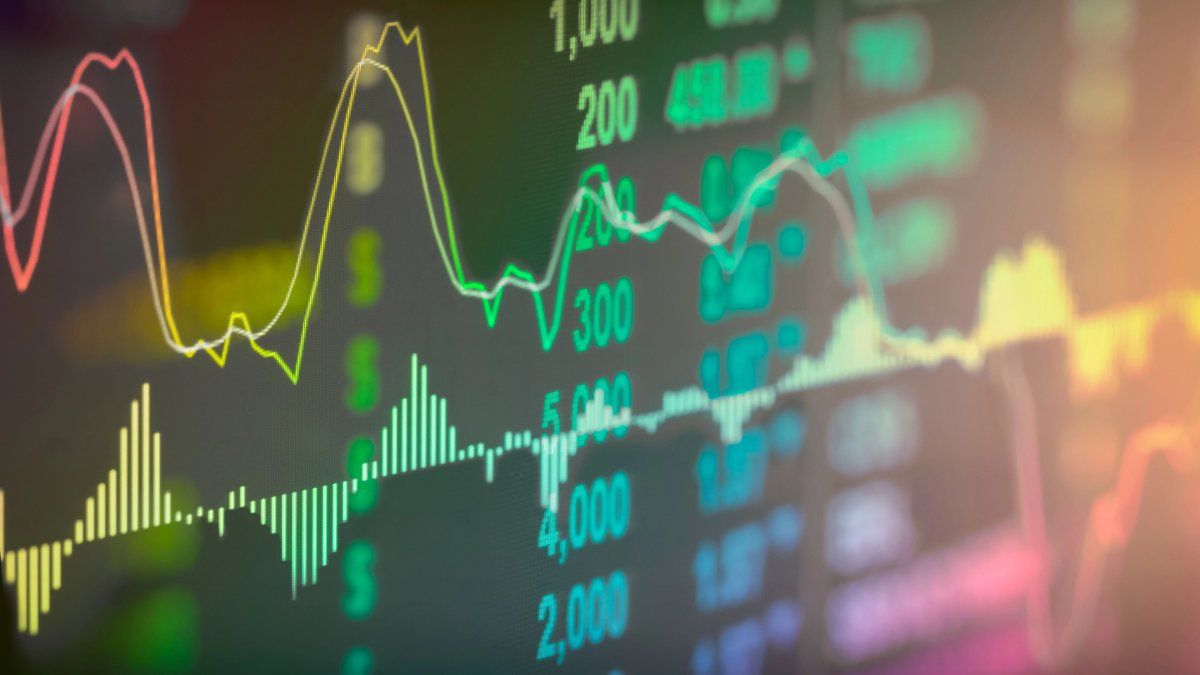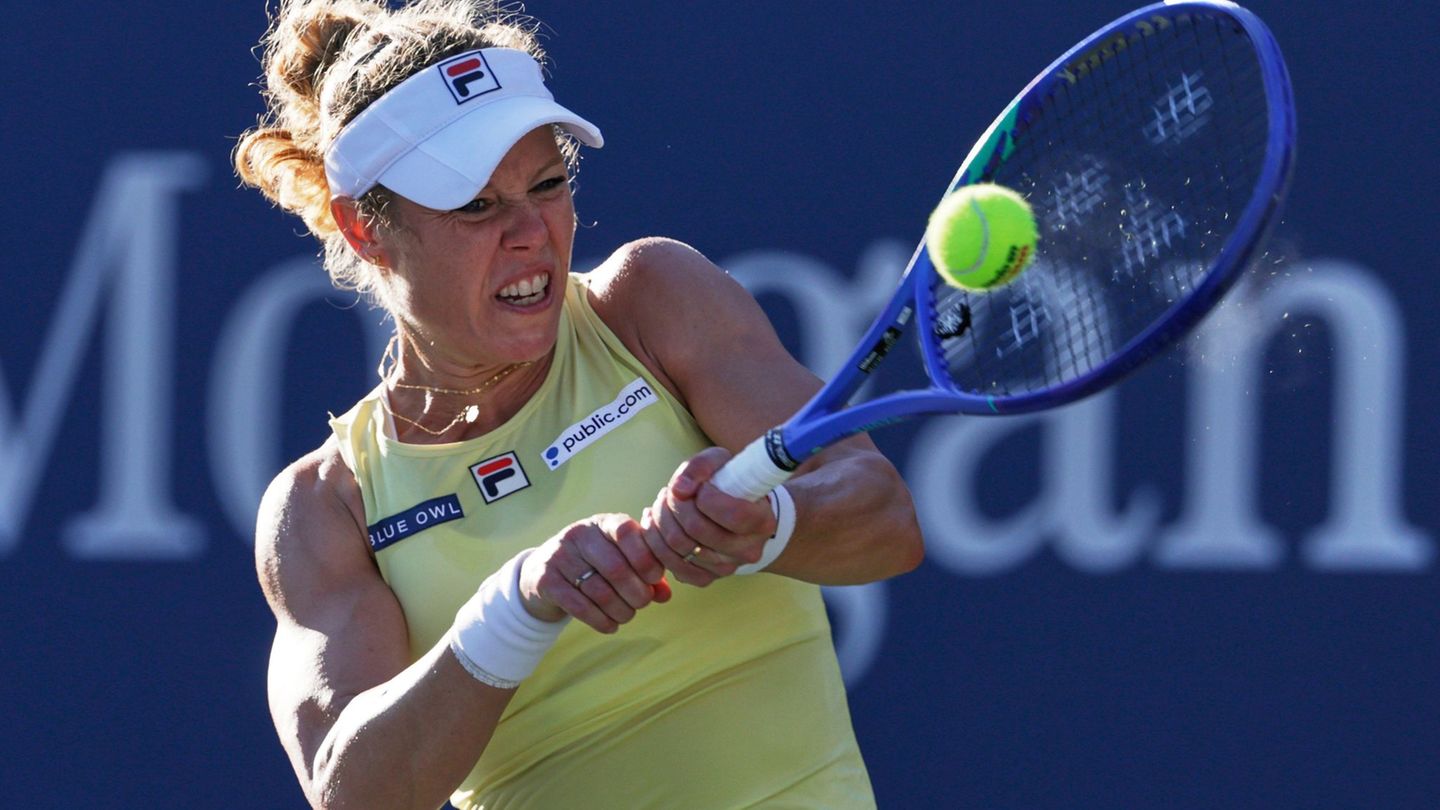On the one hand, The country risk is already in the area of 600 points basica significant decrease compared to the 2,000 points recorded a year ago. On the other hand, Bond yields in pesos during 2024 were driven by exchange rate appreciation and high nominal rates, which were gradually adjusted in a context of disinflation.
Going forward, “the choice of the currency in which to position oneself becomes more complex. The implicit exchange rate between the fixed rate curve and the dollar bonds suggests an upward and progressive path of the MEP dollar, which could reach approximately $1,350 towards end of 2025,” they say from Delphos. In a scenario where the “crawling peg” is reduced in mid-February and maintained at around 1% per month for the rest of the year, The exchange gap should be around 8% so that it is indifferent to opt for fixed rate bonds or the GD35, they calculate.
From Grupo IEB they are also optimistic regarding the “Hard Dollar” bonds, despite the fact that they operate with average parities of US$73.5. “The midterm elections will be one of the risk factors in 2025, but with downward inflation and economic reactivation, a favorable result for socialism that allows it to gain governability looks like the most favorable scenario. In the same order, it is important to mention the risk related to the accumulation of reserves that allows continuing to pay the different maturities and that also appears limited,” they argue.
For conservative profiles: dollar bonds
On the one hand, for profiles more risk averse and more passively managed portfolios the hard-dollar curve still has room to expand towards the 400 basis point zone as an optimistic scenario where bonds would converge to the rest of the emerging markets.
Simulating returns to December 2025 and assuming yield curves at IRRs of 9%, 8% and 7% (currently the curve is practically at levels of 11%), IEB sees that the potential “upside” for 2025 “varies between 20% and 30%, with the highest returns concentrating in the long part of the curve.”
In turn, they weigh Bopreal 2026 (BPY26), a bond issued by the BCRA with an annual return of 10% in dollars. “It is a dollarized option that will reduce exposure to exchange rate risk. It represents a more conservative and less volatile alternative than sovereign bonds with full maturity within the current administration,” analysts argue.
For risky profiles: bonuses in pesos
On the other hand, taking into account that the economic team has highlighted that there is still room for exchange rate appreciation, and There is no immediate exit from the exchange rate, the market believes that this situation could benefit bonds in pesos, by reducing pressure on the exchange rate. Therefore, “for more aggressive profiles, we consider it crucial to monitor the movements of the exchange gap during 2025. This will allow us to take advantage of opportunities in bonds in pesos when the gap is in a higher range, where the potential returns of the carry trade increase”they say from Delphos.
However, some city operators currently consider the June Lecap (S30J5), which yields 2.5% monthly. “It seems attractive to set this rate with a perspective of a stable exchange rate in the short term and downward inflation. A possible reduction in the ‘crawling-peg’ could be accompanied by a reduction in the monetary policy rate (positive for the rate). fixed)”, they say from IOL. And they also value the Boncer 2026 (TZX26): “Thinking about a more aggressive profile, the TZX26 yields 8.8% annually, and has a duration of 1.40 years. Real rates around 9% are interesting to maintain a return monthly 0.75% above inflation,” they add.
If the gap compresses again to levels of 5% or if it remains at current levels during the coming months, the “carry” could continue to be attractive, IEB believes. “Although the carry strategy could offer good returns, it is not clear that the risk-return relationship is favorable compared to the alternative of ‘HD’ bonds,” they emphasize.
For those who have to manage pesos in the short term, it is convenient to have “a diversified portfolio between fixed rate and CER. With a medium-term view, the long section of the CER curve that also operates at levels of CER+9%, in the face of a lifting of the stocks could go lower and there could be value” .
Argentine stocks: perspectives 2025
Of the last 21 weeks, 17 have been positive for the S&P Merval. But, since the beginning of December, it has found a certain pause, beyond the strong rise in the first round of the year. It is true that, due to seasonal reasons, these weeks stood out for their low volume and lack of drivers that reinforce the upward trend. But, already entering 2025, it would be expected that volatility will recover, beyond the underlying enthusiasm that endures in the city.
“We continue with an optimistic outlook on the local equity market for this year. Our base case shows a potential return of 30% that would take the S&P Merval to levels of 3,000 points,” estimated from IEB.
In that sense, your recommended variable income portfolio includes:
-Oil & Gas (35%): High exposure is maintained in this sector with YPF, Transportadora de Gas del Sur and Pampa Energía. The bet lies in the progress of projects to increase evacuation capacity from Vaca Muerta, a key driver for growth.
-Banking sector (35%): The financial sector also occupies a prominent place, with a focus on BBVA Argentina, Grupo Supervielle and Banco Macro. Returns on equity (ROE) are expected to have reached their floor in the last quarter of 2024, driven by the rebound in credit lines such as personal, mortgage and pledge loans.
-Regulated sectors (20%): Central Puerto, Transportadora de Gas del Norte and Metrogas They lead in this area. Recent rate increases have improved income and working capital. Future tariff adjustments are expected to generate a positive impact on balance sheets, consolidating growth.
-Construction and economic activity (10%): In Real Estate, the selection includes IRSA, with expectations of revaluation of the square meter and a rebound in consumption in shopping centers. In Materials, the bet is Black Hillwhich could benefit from growth in private works and the possible exit of InterCement, a positive catalyst for the company.
“We maintain an optimistic stance regarding the Argentine market, beyond the volatility that may arise as a result of the midterm elections, we see some key catalysts that could give a greater boost to local actions, such as the lifting of the stocks, the reclassification of Argentina as an ‘Emerging Market’, the good performance in the elections that allows the Government to facilitate greater structural reforms”says Maximiliano Donzelli, Investment Strategies Manager at IOL Inversiones. All these catalysts favor the arrival of international investments to the country, so Analysts are optimistic about 2025, with a marked preference for the energy sector, such as YPF and Transportadora Gas del Sur.
In Brazil, for its part, although currently neutral, “We consider that a gradual positioning in Brazilian assets will be strategic as expectations of rate cuts and the presidential elections approach. In the pre-election period, a partial rotation from Argentine to Brazilian assets is recommended. In this way, we prefer to maintain the current positions in Argentine stocks and start adding Brazilian stocks gradually starting in the second half of the year,” they emphasize from IOL.
With already demanding valuations for several components of the Merval, Delphos suggests taking advantage of these first weeks of the year “to take part of the profits generated during 2024, reduce exposure to ‘Argentine equity’ and look for assets with lower volatility and less demanding valuations.”
Instead, they arise some attractive options for those who want to hold positions in Latin American risk assets. One of them is Corporación América Airports (operates as Cedear in BYMA)“whose volatility is significantly lower than that of the vast majority of purely Argentine papers, and due to its participation in Aeropuertos Argentina 2000 it allows us to continue betting on the progress of the domestic economy,” say Delphos analysts. And other suggestions from the consulting firm, after the recent declines, are: Mercado Libre and NuBank, that “dragged by the bad moment in Brazil and the strong correction shown in recent weeks, they allow us to accumulate positions in assets with a lot of growth potential,” they project.
Cedears: outlook 2025
Given the current context, IOL favors more conservative international alternatives for the first months of the year. The market appears to have already priced in a solid performance of the economy for next year, driven by the recent rally in pro-cyclical sectors. However, There is still a lack of greater clarity about the agenda of the new president of the United States, especially regarding his foreign policy.
For its part, the Federal Reserve, leaning towards a pause in its monetary easing program To evaluate the path of inflation with greater certainty, it has reduced its expectations of cuts in 2025 to just two, instead of the four anticipated at the September meeting. In this context, the market anticipates an increase in volatility during the first quarter. However, once the president takes office and establishes a clear roadmap, clearing up the current uncertainties, possible measures such as tax cuts and deregulation could provide an additional boost to the markets.
Under this panorama, IOL recommends adding some of these Cedears to portfolios:
-Goldman Sachs (GS): Major and regional banks face less pressure on net interest margin with slower cuts to the benchmark rate. Furthermore, we expect sustained growth to offset pressures on interest margins, and deregulation under the incoming Trump administration will be a strong boost for banks. Goldman Sachs stands out as a solid alternative within the financial sector as it is the main beneficiary of a recovery in investment banking markets, such as M&A, ECM and DCM.
-Altria Group (MO): with a dividend yield of 7.7%, offers a reliable source of passive income compared to its peers. We like Altria as a conservative alternative for 2025, with a P/FCF of 10.7x, high profitability margins and sustained projected growth for the coming years as a result of its strategy of diversifying its product portfolio beyond the alternatives of traditional smoke. In addition, it is expected to face reduced regulatory pressures following the election of Donald Trump as President of the United States, who is expected to take a less restrictive approach and help mitigate regulatory risks.
– Russell 2000 (IWM): Small caps, which are trading at a historic discount compared to large caps, should benefit from future rate cuts and any signs of improvement in the economy. Furthermore, Trump’s protectionism should mainly benefit these companies given their low exposure to international markets relative to those with larger capitalization, IOL concludes.
Source: Ambito
I am an author and journalist who has worked in the entertainment industry for over a decade. I currently work as a news editor at a major news website, and my focus is on covering the latest trends in entertainment. I also write occasional pieces for other outlets, and have authored two books about the entertainment industry.




